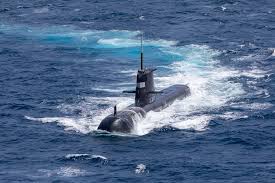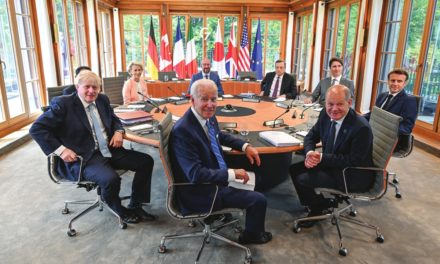In recent months, discussions around Australia’s acquisition of nuclear-powered submarines under the AUKUS alliance have taken an unexpected turn. A proposal from a U.S. congressional think tank suggests that Australia may not purchase the submarines outright as initially envisioned, but instead lease them from the U.S. This arrangement would involve U.S. submarines, with U.S. crews, stationed at Australian bases. This idea has raised questions about the extent of Australia’s defence autonomy and how American political interests often drive changes in agreements with its allies.
This proposal comes at a time when the U.S. is increasingly looking to maintain strategic control over its advanced military technology, ensuring that its allies, including Australia, are closely integrated into U.S. defence frameworks. It also reflects a broader trend in U.S. foreign policy, where the “rules” governing bilateral and multilateral agreements are often subject to change depending on the political climate in Washington. Australia’s history with U.S. involvement in its domestic and foreign affairs offers a long and complex backdrop to these developments.
Leasing Submarines: The Latest Shift in U.S. Policy
The initial AUKUS deal, announced in 2021, was seen as a landmark agreement that would enable Australia to develop its nuclear-powered submarine capability with U.S. and British assistance. This would significantly enhance Australia’s defence posture in the Indo-Pacific, countering the growing influence of China. However, the new proposal to lease the submarines rather than allowing Australia to purchase them outright suggests a shift in U.S. strategy, one that would keep greater control in American hands while limiting Australia’s independent military capabilities.
By maintaining U.S. crews and basing these submarines on Australian soil, the U.S. would ensure its continued influence over their operation, preventing Australia from gaining full control over the highly sensitive nuclear technology. Critics argue that this arrangement may further bind Australia to U.S. geopolitical interests, limiting its freedom to make sovereign defence decisions. It also raises the issue of whether this leasing arrangement was truly what Australia intended when signing the AUKUS deal.
U.S. Shifting the Goalposts: A Historical Pattern
This recent proposal is not an isolated case of the U.S. shifting the terms of engagement with Australia to suit its evolving political and strategic goals. In fact, U.S. interference and influence in Australian politics and defence strategy have a long history.
1. The 1975 Dismissal of Gough Whitlam
One of the most controversial examples of alleged U.S. interference in Australian domestic politics occurred in 1975 with the dismissal of Prime Minister Gough Whitlam. Whitlam’s push for an independent foreign policy, including a review of U.S. military bases like Pine Gap, made him unpopular in Washington. The subsequent dismissal of Whitlam by Governor-General Sir John Kerr sparked allegations that the U.S., particularly the CIA, had a hand in the event. Although concrete evidence of direct U.S. involvement remains elusive, the episode is often cited as an example of how U.S. political interests can override Australian sovereignty.
2. Cold War Anti-Communism and Labor Politics
During the Cold War, U.S. intelligence agencies actively supported anti-communist elements within Australia’s political landscape. The splitting of the Australian Labor Party in the 1950s, which resulted in the formation of the Democratic Labor Party, is believed to have been influenced by U.S. interests. The resulting division weakened the Labor Party, ensuring conservative governments more aligned with U.S. anti-communist policies held power in Australia for decades. This manipulation of internal Australian politics shows how U.S. political goals have long shaped Australian outcomes.
3. WikiLeaks and the Removal of Kevin Rudd
In 2010, the ousting of Prime Minister Kevin Rudd and the subsequent rise of Julia Gillard was also surrounded by U.S. diplomatic engagement. WikiLeaks documents revealed that U.S. embassy officials had maintained close contact with senior Labor figures in the lead-up to Rudd’s removal, including key factional leaders who had informed U.S. officials of the internal power dynamics within the party. While there is no direct evidence of U.S. interference, these revelations suggest that American diplomats had significant insight into and possibly influence over the political upheaval in Australia.
4. 2003 Iraq War and John Howard
Australia’s decision to join the U.S.-led invasion of Iraq in 2003, under the leadership of Prime Minister John Howard, further illustrates how American strategic interests can drive Australian policy decisions. Despite widespread opposition within Australia, Howard’s government committed troops to the invasion, aligning closely with the Bush administration’s foreign policy. This decision to support U.S. military ventures despite domestic opposition highlighted Australia’s subservience to U.S. political and military interests, further raising concerns about Australia’s autonomy in its alliance with the U.S.
Shifting Rules and Evolving Ideologies
The proposed leasing arrangement for submarines under AUKUS reflects a broader tendency in U.S. foreign policy: the ability to change the “rules” of engagement depending on domestic political and ideological shifts. For instance, U.S. policymakers may emphasize strategic control and alliance management, as seen in the submarine leasing proposal, rather than full transfers of military technology. This has echoes in U.S. actions throughout history, where alliances and agreements are adjusted based on the shifting interests of the U.S. government, often leaving smaller nations like Australia adjusting to the new terms.
U.S. political ideologies also play a significant role. For example:
- During the Cold War, U.S. anti-communist policies drove its support for conservative Australian governments, undermining more progressive or independent Australian leaders.
- In the 2000s, the Bush administration’s “War on Terror” saw Australia pulled into conflicts like Iraq, driven by the U.S. political agenda of spreading democracy and combating terrorism.
- In recent years, the rise of U.S.-China rivalry has seen Australia pushed to adopt a more confrontational stance toward China, with the AUKUS agreement serving as a key tool for embedding Australia in U.S. strategic frameworks.
Conclusion: Australia’s Path Forward
As the U.S. once again shifts the rules in its dealings with Australia—this time by proposing to lease submarines rather than selling them—the pattern of American influence in Australian politics continues. Whether through covert political manoeuvres, military alliances, or intelligence sharing, the U.S. has consistently played a key role in shaping Australia’s domestic and foreign policies to suit its own strategic needs.
For Australia, this raises fundamental questions about sovereignty and the long-term implications of closely aligning with U.S. interests. As debates around the leasing of submarines continue, Australia must carefully consider its defence autonomy and whether its interests are being adequately safeguarded in an alliance that often seems to serve U.S. political and ideological goals first and foremost.





